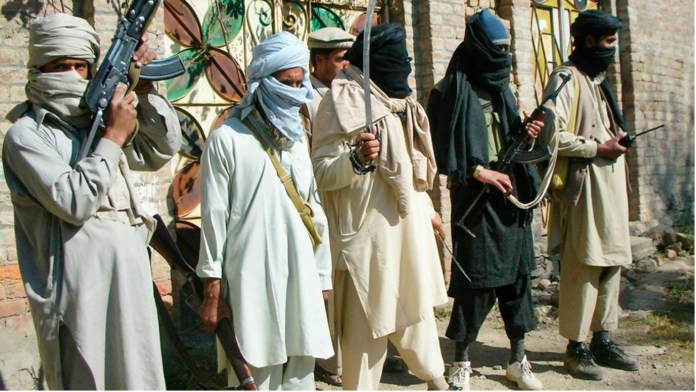By: Dr. Sahibzada Muhammad Usman
There has been a steady rise in instability and terrorist attacks in Pakistan since the Afghan Taliban retook control of Kabul. Terrorist attacks increased by 27% in 2022 compared to 2021, and the lethality increased, as seen by the Peshawar suicide bombing at the Police Lines mosque. Because of the assault, Pakistan had one of its deadliest months in January 2023, with 134 fatalities and 254 injuries reported from at least 44 terrorist-related events nationwide. Attacks against Pakistan’s interests have also occurred in Afghanistan across the border, including one in December 2022 that was directed at Pakistan’s embassy in Kabul.
The main area of vulnerability has been along the Afghanistan-Pakistan border. The revival of terrorism is shown by the numerous terrorist strikes during the last two years, particularly in Balochistan and Khyber Pakhtunkhwa (KP). Yet, further from the Pakistan-Afghanistan border, there was a drop in violent occurrences in Punjab and Sindh.
Politicians and the security apparatus are aware of the threat that prohibited groups like the Tehreek-e-Taliban Pakistan (TTP), Balochistan Liberation Army (BLA), Baloch Nationalist Army (BNA), Sindhudesh People’s Army (SPA), and Islamic State Khorasan Province (ISKP) pose to national security.
The TTP, BLA, and ISKP have all played a significant role as the wave of terrorist violence in Pakistan has grown. The fact that most of these organizations get their power from Afghanistan and use the landlocked nation as a retreat ground has much to do with their rebirth. This has turned out to be one of Pakistan’s most perilous situations.
Pakistani administration started negotiations with the TTP after the Afghan Taliban took back control of Kabul. It turned out not to be beneficial. A lack of political will to execute the National Action Plan (NAP) has thrown a wrench in the gears, emboldening anti-state groups to operate with impunity. These elements have inspired the TTP to reorganize and escalate terrorism nationwide.
Additional mayhem and carnage have also come from the Afghan Taliban’s refusal to prevent the TTP and other groups from utilizing their territory as a base for operations against Pakistan. The TTP, which has ideological ties to the Afghan Taliban, is gaining some legitimacy for its conflict with Pakistan. Finally, the organization is strengthening itself and finding allies and facilitators for its evil plans within Pakistan. Local instability has been sparked by the TTP’s resurgence and regrouping in KP, notably in Swat, Malakand Division. There are widespread demonstrations against the re-entry of these alien forces into the nation in both tribal and settled regions.
Along with the TTP, the Khorasan branch of the Islamic State and Baloch rebel organizations like the BLA and others increased their terrorist operations in 2022. The BNA and SPA emerged as new terrorist organizations in Balochistan and Sindh the same year, and both organizations later claimed credit for terrorist attacks in Lahore and Karachi, respectively. It is thought that Baloch militants focusing on the China-Pakistan Economic Corridor have a tactical relationship with Sindhi rebel organizations.
Up to 512 terrorist activities, or an average of 43 per month, were committed in Pakistan in 2022. These attacks targeted both civilians and security personnel. The assaults resulted in 750 wounded and 980 deaths. At least 283 of them—including security personnel—died in 2022, with 40 of those deaths occurring in just one month, December. The number of deaths in Pakistan increased by 14.47 percent in 2022 compared to 2021 (850 casualties).
KP accounts for 64% of all terrorist activities in Pakistan, followed by Balochistan (26%), Sindh (5.8%), and Punjab (2.8%). The majority of the deaths have been in KP and Balochistan. KP has seen an exponential rise in violence, with a 59 percent increase in deaths in 2022 and 633 fatalities compared to 399 in 2021). Balochistan saw 254 fatalities and 218 injuries as a result of terrorist attacks. Twenty-eight people were murdered, 27 were wounded in Punjab, 57 died, and 58 were injured in Sindh. According to the Center for Research and Security Studies’ Annual Security Report 2022, although violence increased in KP and Balochistan in 2022, it decreased in Punjab and Sindh.
Despite decreased violence in these areas, Pakistan saw 512 terrorist occurrences in 2022, the first time the nation had more than 300 militant assaults since 2017. In addition, four sectarian-related terrorist incidents—compared to only two in 2021—were recorded in 2022, resulting in 72 deaths and 213 injuries.
The TTP, ISKP, and BLA were responsible for most assaults. These outlawed organizations have been engaging in cross-border terrorism with more impunity in Afghanistan, where they have safe havens and support.
Terrorist activities will continue to target security personnel, especially the army and police, according to patterns in terrorism during the last two years. The outlawed terror organizations will continue to target KP and Balochistan, which might threaten Pakistan’s main cities.
Pakistan should reconsider its approach to Afghanistan and have bilateral talks with the Afghan Taliban on the TTP, counterterrorism, cooperative border security management, and refugees to address this menace. Pakistan can adopt a strategy for establishing a mutually beneficial border coordination and control system with Kabul.
To prevent potential terrorist threats at home, law enforcement agencies’ capacity development has to be improved. The government has authorized the National Counter Violent Extremism Policy (NCVE) to stop individuals from being radicalized. The NCVE must be translated into actionable, quantifiable objectives to stop extremism in Pakistan. The NAP’s implementation should also be monitored and revised. The NAP may be successful if all measures related to openness and accountability are implemented correctly.
The Central Apex Committee’s resolution, which calls for establishing a forensic lab in Khyber-Pakhtunkhwa, safe city initiatives, and capacity development of the KP law enforcement forces, is to be carried out in word and spirit. To forecast, prevent, and identify terrorism and crime, the police department should use contemporary approaches such as data analytics and mapping of violence and crime. Using visual data would aid in developing ways to stop crime and terrorism.
About Author:
Dr. Sahibzada Muhammad Usman
Research Scholar and Academic; Ph.D. in Political Science at the University of Pisa, Italy. Dr. Usman has participated in various national and international conferences and published 30 research articles in international journals.






